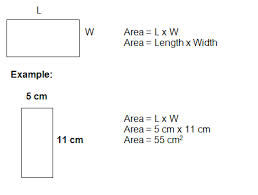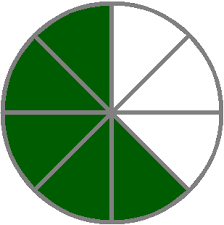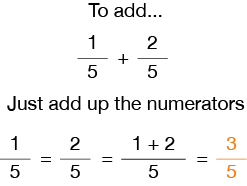In this chapter we will be learning more about fractions. We will learn how to compare fractions, order fractions, and find equivalent fractions.
Important Chapter Vocabulary:
1. Common denominator: A common multiple of the denominators of two or more fractions.
2. Denominator: The part of the fraction below the line, which tells how many equal parts there are in the whole or in a group.
3. Equivalent fractions: Two or more fractions that name the same amount.
4. Numerator: The part of a fraction above the line, which tells how many parts are being counted.
5. Simplest Form: A fraction in which 1 is the only number that can divide evenly into the numerator and the denominator.
Featured Post
Welcome Back to School …you little Mon...

Wednesday, December 7, 2016
Monday, November 28, 2016
GoMath Chapter 5
In chapter 5, we will be working with factors, multiples, and patterns. The students will study and learn to find factors and multiples and work with number patterns. There are six sections in this chapter.
Important Chapter Vocabulary
1. Common factor; A number that is a factor of two or more numbers.
2. Common Multiple; A number that is a multiple of two or more numbers.
3. Composite Number; A number that has more than two factors.
4. Divisible; A number is divisible by another number if the quotient is a counting number and the remainder is zero.
5. Factor; A number multiplied by another number to find a product.
6. Pattern; An ordered set of numbers or objects.
7. Prime Number; A number that has exactly two factors, one and itself.
8. Term; Each number or object in a pattern.
Divisibility Rules
Number Divisibility Rule
2 The number is even.
3 The sum of the digits
is divisible by 3.
5 The last digit is 0 or 5.
6 The number is even
and divisible by 3.
9 The sum of the digits
is divisible by 9.
Important Chapter Vocabulary
1. Common factor; A number that is a factor of two or more numbers.
2. Common Multiple; A number that is a multiple of two or more numbers.
3. Composite Number; A number that has more than two factors.
4. Divisible; A number is divisible by another number if the quotient is a counting number and the remainder is zero.
5. Factor; A number multiplied by another number to find a product.
6. Pattern; An ordered set of numbers or objects.
7. Prime Number; A number that has exactly two factors, one and itself.
8. Term; Each number or object in a pattern.
Divisibility Rules
Number Divisibility Rule
2 The number is even.
3 The sum of the digits
is divisible by 3.
5 The last digit is 0 or 5.
6 The number is even
and divisible by 3.
9 The sum of the digits
is divisible by 9.
Monday, November 7, 2016
GoMath Chapter 4
Our class will be learning how to model division, and use the division algorithm to divide up to 3-digit dividends by 1-digit divisors. The class will learn different methods to divide, including using models, repeated subtraction, and the standard division algorithm. We will also learn to divide with remainders.
Our homework will provide practice modeling division and using the division algorithm. There are twelve sections in this chapter.
Important Chapter Vocabulary:
1. Compatible Mumbers; Numbers that are easy to compute mentally.
2. Multiple; A number that is the product of a given number and a counting number.
3. Partial Quotient; A method of dividing in which multiples of the divisor are subtracted from the dividend and then the quotients are added together.
4. Remainder; The amount left over when a number cannot be divided equally.
5. Dividend; The number that is to be divided in a division problem.
6. Divisor; The number that divides the dividend.
Monday, October 17, 2016
GoMath Chapter 3
Our class, during the next few weeks, will be learning to multiply by 2-digit whole numbers. We will also learn how to describe the reasonableness of an estimate.
The homework will provide practice with estimation and multiplication of numbers with more than 1 digit. There are seven sections in this chapter.
Important Chapter Vocabulary:
1. Compatible Numbers; Numbers that are easy to compute with mentally.
2. Associative Property of Multiplication; The property that states that when the grouping of factors is changed, the product remains the same.
3. Commutative Property of Multiplication; The property that states when the order of two factors is changed, the product remains the same.
4. Estimate; To find an answer that is close to the exact amount.
5. Partial Product; A method of multiplying in which the ones, tens, hundreds, and so on are multiplied separately and then the products are added together.
6. Product; The answer in a multiplication problem.
7. Regroup; To exchange amounts of equal value to rename a number.
The homework will provide practice with estimation and multiplication of numbers with more than 1 digit. There are seven sections in this chapter.
Important Chapter Vocabulary:
1. Compatible Numbers; Numbers that are easy to compute with mentally.
2. Associative Property of Multiplication; The property that states that when the grouping of factors is changed, the product remains the same.
3. Commutative Property of Multiplication; The property that states when the order of two factors is changed, the product remains the same.
4. Estimate; To find an answer that is close to the exact amount.
5. Partial Product; A method of multiplying in which the ones, tens, hundreds, and so on are multiplied separately and then the products are added together.
6. Product; The answer in a multiplication problem.
7. Regroup; To exchange amounts of equal value to rename a number.
Friday, September 16, 2016
GoMath Chapter 2
During the next few weeks, our math class will be learning about multiplying by 1-digit whole numbers. We will investigate strategies for multiplying 2-, 3-, and 4- digit numbers by the numbers 2-9.
Important Chapter Vocabulary
1. Distributive Property; The property that states that multiplying a sum by a number is the same as multiplying each addend by the number and then adding the products.
2. Partial Products; A method of multiplying in which the ones, tens, hundreds, and so on are multiplied separately and then the products are added together.
Multiplying by tens, hundreds, thousands
7 x 4 = 28
7 x 40 = 280
7 x 400 = 2800
7 x 4000 = 28,000
Important Chapter Vocabulary
1. Distributive Property; The property that states that multiplying a sum by a number is the same as multiplying each addend by the number and then adding the products.
2. Partial Products; A method of multiplying in which the ones, tens, hundreds, and so on are multiplied separately and then the products are added together.
Multiplying by tens, hundreds, thousands
7 x 4 = 28
7 x 40 = 280
7 x 400 = 2800
7 x 4000 = 28,000
Wednesday, August 31, 2016
GoMath Chapter 1
Important Chapter Vocabulary
1. Estimate; A number close to an exact amount.
2. Expanded Form; A way to write numbers by showing the value of each digit.
3. Period; Each group of three digits separated by commas in a multi-digit number.
4. Round; To replace a number with another number that tells about how many or how much.
5. Standard Form; A way to write numbers by using the digits 0-9 with each digit having a place value.
6. Word Form; A way to write numbers by using words.
Expanded Form; 3,000 +500+10+9
Standard Form; 3,519
Word Form; three thousand, five hundred nineteen
Friday, August 12, 2016
Welcome Back to School…
You Little Monster!
I can’t believe how fast the summer has gone and that it’s already time for school! I hope you've had a wonderful summer relaxing, playing, and making lots of memories. We are going to have a terrific 4th grade year!
Below are some items I would like you to bring on the first day of school. Please don’t bring other items because our desks don’t allow for much room.
1. A 1 inch binder. (No larger please)
2. Dividers for binder, 5. Please help your child get them labeled on both sides as Science, Utah Studies, Book Reports, Writing, and Misc.
3. 1 spiral bound notebook for math
4. 1 spiral bound notebook for science
4. 1 spiral bound notebook for science
5. 2 red pens, for correcting
6. Small container for pencils and pens
7. Pencils, send more throughout the year
8. Box of tissues/Clorox Wipes for the class
North Park’s “Back to School Night” is Tuesday, Aug. 23, at 6:00 pm, starting in the gym. Please plan to attend. There is a lot of important information discussed at this time. If there are concerns or questions you have for me before this meeting, you are welcome to call me at school 752-5121 or e-mail me at holly.stuart@ccsdut.org. It is such a busy night, and I just don’t have time to individually talk to a lot of parents.
I am asking for a $5 donation to go towards our classroom magazine, "Storyworks". It is based on the Utah Core Curriculum and is a wonderful addition to our language arts program. If you are willing to donate, just bring it to back to school night, or send it with your child to school.
Please e-mail me at the address above so I know you were able to access my blog. You will be using it a lot! Also, if plans have changed and you are not planning on attending North Park this year, please let me know asap. Enjoy the rest of your summer!
Please e-mail me at the address above so I know you were able to access my blog. You will be using it a lot! Also, if plans have changed and you are not planning on attending North Park this year, please let me know asap. Enjoy the rest of your summer!

~Mrs. Stuart
Thursday, April 7, 2016
GoMath Chapter 13
During the next few weeks, our class will be learning about perimeter and area. We will learn the formula for finding the area of a rectangle, and learn the concept that area is a measure of how many square units cover a flat surface.
Important Chapter Vocabulary:
1. Area; The number of square units needed to cover a flat surface.
2. Base; Any side of a two-dimensional figure.
3. Formula; A set of symbols that expresses a mathematical rule.
4. Height; The measure of a perpendicular from the base to the top of a two-dimensional figure.
5. Perimeter; The distance around a figure.
6. Square Unit; A unit of area with dimensions of 1 unit x 1 unit.
Area formula;

Perimeter formula;

Important Chapter Vocabulary:
1. Area; The number of square units needed to cover a flat surface.
2. Base; Any side of a two-dimensional figure.
3. Formula; A set of symbols that expresses a mathematical rule.
4. Height; The measure of a perpendicular from the base to the top of a two-dimensional figure.
5. Perimeter; The distance around a figure.
6. Square Unit; A unit of area with dimensions of 1 unit x 1 unit.
Area formula;
Perimeter formula;
Tuesday, March 15, 2016
GoMath Chapter 12
During this chapter we will be learning about customary and metric units of length, weight/mass, and liquid volume. We will also find elapsed time and learn to compute with mixed measures. There are eleven sections in the chapter.
Important Chapter Vocabulary
1. Decimeter; A metric unit for measuring length or distance.
2. Fluid Ounce (fl oz); A customary unit for measuring liquid volume.
3. Line Plot; A graph that shows the frequency of data along a number line.
4. Second; A small unit of time.
Thursday, February 11, 2016
GoMath Chapter 10
Throughout the next few weeks, we will be studying two-dimensional figures. The students will use definitions to identify and describe characteristics of these figures. Our homework will have identifying triangles and quadrilaterals. This chapter has seven sections.
Important Chapter Vocabulary
1. Acute Triangle; A triangle with three acute angles. (less than 90 degrees)
2. Line Segment; A part of a line that includes two points, called endpoints, and the points between them.
3. Obtuse Triangle; A triangle with one obtuse angle. (larger than 90 degrees)
4. Ray; A part of a line, with one endpoint, that is straight and continues in one direction.
5. Right Triangle; A triangle with one right angle (90 degrees) and two acute angles.
Important Chapter Vocabulary
1. Acute Triangle; A triangle with three acute angles. (less than 90 degrees)
2. Line Segment; A part of a line that includes two points, called endpoints, and the points between them.
3. Obtuse Triangle; A triangle with one obtuse angle. (larger than 90 degrees)
4. Ray; A part of a line, with one endpoint, that is straight and continues in one direction.
5. Right Triangle; A triangle with one right angle (90 degrees) and two acute angles.
Friday, January 29, 2016
GoMath Chapter 9
Our class will relate both fractions and money to place value and will learn how to rename fractions as decimals. We will also add fractional parts of 10 and 100 and compare decimals through hundredths. There are seven sections in this chapter.
Important Chapter Vocabulary
1. Decimal; A number with one or more digits to the right of the decimal point.
2. Decimal Point; A symbol used to separate dollars from cents in a money amount and to separate the ones and the tenths place in a decimal.
3. Equivalent Decimals; Two or more decimals that name the same amount.
4. Hundredth; One of one hundred equal parts.
5. Tenth; One of ten equal parts.
Important Chapter Vocabulary
1. Decimal; A number with one or more digits to the right of the decimal point.
2. Decimal Point; A symbol used to separate dollars from cents in a money amount and to separate the ones and the tenths place in a decimal.
3. Equivalent Decimals; Two or more decimals that name the same amount.
4. Hundredth; One of one hundred equal parts.
5. Tenth; One of ten equal parts.
Thursday, January 21, 2016
GoMath Chapter 8
In this chapter, the students will learn to multiply fractions and mixed numbers by whole numbers. We will learn to write a fraction as a product of a whole number and a unit fraction, and to find multiples of unit fractions. There are five sections in this chapter.
Important Chapter Vocabulary
1. Factor; A number that is multiplied by another number to find a product.
2. Fraction; A number that names part of a whole or part of a group.
3. Identity Property of Multiplication; The property that states the product of any number and 1 is that number.
4. Multiple; The product of two counting numbers.
5. Product; The answer to a multiplication problem.
6. Unit Fraction; A fraction that has one as the numerator.


Important Chapter Vocabulary
1. Factor; A number that is multiplied by another number to find a product.
2. Fraction; A number that names part of a whole or part of a group.
3. Identity Property of Multiplication; The property that states the product of any number and 1 is that number.
4. Multiple; The product of two counting numbers.
5. Product; The answer to a multiplication problem.
6. Unit Fraction; A fraction that has one as the numerator.
Tuesday, January 5, 2016
GoMath Chapter 7
Our class will be learning how to add and subtract fractions and mixed numbers over the next few weeks. First, we will use models to find the sums or the differences. Then we will record equations to match our models. Finally, we will add and subtract without using models. Our homework will be practice adding and subtracting fractions with and without models. There are ten sections in this chapter.
Important Chapter Vocabulary
1. Mixed Number; An amount given as a whole number and a fraction.
2. Unit Fraction; A fraction that has a numerator of one.
3. Associative Property of Addition; The property that states that when the grouping of addends is changed, the sum is the same.
4. Commutative Property of Addition; The property that states that when the order of two or more addends is changed, the sum is the same.
5. Denominator; The part of the fraction below the line, which tells how many equal parts there are in the whole or in a group.
6. Fraction; A number that names part of a whole or part of a group
7. Numerator; The part of a fraction above the line, which tells how many parts are being counted.
8. Simplest Form; A fraction in which the numerator and denominator have only 1 as a common factor.

Important Chapter Vocabulary
1. Mixed Number; An amount given as a whole number and a fraction.
2. Unit Fraction; A fraction that has a numerator of one.
3. Associative Property of Addition; The property that states that when the grouping of addends is changed, the sum is the same.
4. Commutative Property of Addition; The property that states that when the order of two or more addends is changed, the sum is the same.
5. Denominator; The part of the fraction below the line, which tells how many equal parts there are in the whole or in a group.
6. Fraction; A number that names part of a whole or part of a group
7. Numerator; The part of a fraction above the line, which tells how many parts are being counted.
8. Simplest Form; A fraction in which the numerator and denominator have only 1 as a common factor.

Subscribe to:
Posts (Atom)

